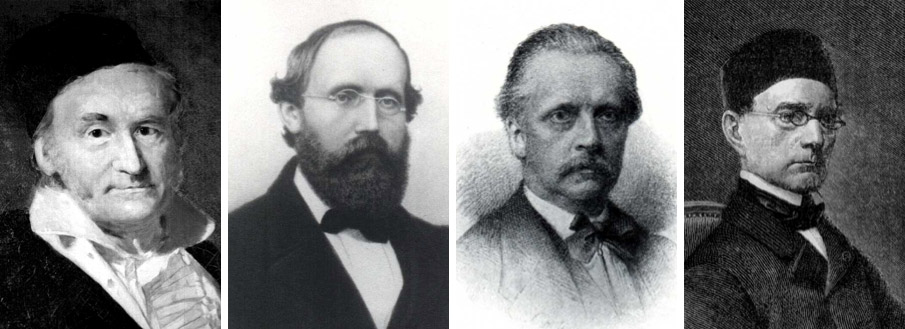

Gauss’ 1827 – Göttingen “Disquisitiones generalis circa superficies curvas” contained the germ of the notion of differential manifolds, i.e. of the mathematical field of “global analysis”, and it made the crucial distinction for surfaces in Euclidean 3D spaces between their intrinsic and their extrinsic geometrical properties, i.e. between the properties which exclusively depend on the distances between the points of these surfaces such as these distances result from the measurements of the lengths of the curves which lie completely on these surfaces and which connect these points and the properties which basically depend on the shapes that these surfaces assume in the ambient Euclidean spaces, or still on “the looks” of these surfaces when observing them in space. Roughly, “global analysis” deals with the essentials of the fields of algebra and analysis.
The awareness of an intrinsic geometry of surfaces in Euclidean 3-space amounts to the awareness of the
existence of “abstract” Riemann-Finsler geometries on all non-weird differential manifolds.
The establishment of these geometries was done, independently, by Riemann and, respectively, Helmholtz, in their “Ueber die Hypothesen, respectively, Tatsachen, welche der Geometrie zu Grunde liegen”, published in 1866 (though Riemann’s lecture at Göttingen with this title was delivered already in 1854), respectively, in 1868, who were hereby reflecting, in the spheres of natural philosophy, and, in particular, about the physical space-time, respectively, about human visual perception.
Following Minkowski’s 1908 – Köln lecture on “Raum und Zeit”, Riemann’s geometry became the language in which Einstein in 1916 could express his general theory of relativity; actually, Einstein’s “field equations” basically define mass and energy in terms of the Ricci curvatures of “our” physical space-time.